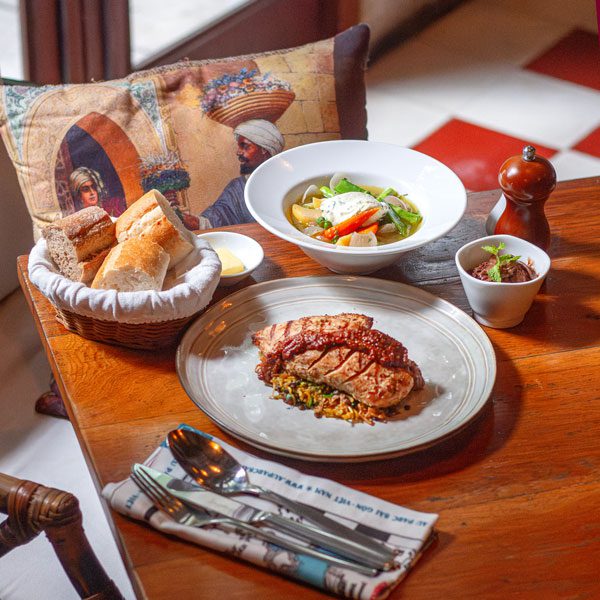Throughout the vast wealth of cultures and cuisines in the Mediterranean region, one food is singular in its importance and presence. The making and eating of bread is a tradition that predates, and indeed fueled, early civilization in the Mediterranean.
Thought to be one of the first prepared foods, records dating to 30,000 years ago indicate early hunter-gatherer societies in Australia and Europe were using rocks to pound plants and bake the resulting starch over fires. The development of agriculture during the Neolithic period some 20,000 years later led to the proliferation of different styles of bread as cultures across the world.
Agriculture brought with it a steady and varied supply of different grains, resulting in the development of thousands of different bread recipes. Flatbreads, leavened loaves, unleavened matzoh, enriched doughs and more allowed early civilizations to convert their grain harvests into a compact, less perishable and versatile food source.
The appearance of bread fueled the rise of early civilization by providing not only food security but abundance. Warriors were now able to march longer than ever and carry with them highly caloric and nourishing bread for the battles ahead. In times of peace, bread was used to feed workers, kings and soldiers alike.
One of the most well known stories testifying to the durability of bread is found in the Ancient Testament. According to the book, the Jews invented unleavened matzah bread during their exile from Egypt. Having to be constantly on the move, they found a way to bake bread without needing leaven, drastically reducing the time required to prepare food and feed themselves.
As the Middle Ages and Renaissance brought the development of Mediterranean civilizations, bread recipes became increasingly complex and refined. Enriched breads like brioche or focaccia, sourdough and breads flavoured with spices like caraway or poppy seed became all the rage in European societies. The southern Mediterranean meanwhile mastered the art of flatbreads, like pita or saj.
While the Earl of the English town of Sandwich claims to have invented the sandwich in the late 18th century during a night of gambling and drinking, records show that people across the Mediterranean region were already eating their bread with sliced meats, cheeses and vegetables. Sandwiches became a portable, affordable and filling meal for everyone, regardless of class.
The refinement in agricultural technology during the Middle Ages further contributed to the quality of bread. As grinding technology became more advanced, bakers were able to use finer and purer flours to produce lightly coloured and fluffy breads, which became a sign of refinement and sophistication amongst nobility.
Today, bread is eaten throughout the Mediterranean Region and the world in a variety of shapes and sizes. From French brioche, to Italian focaccia to Levantine flatbreads, bread is a staple throughout Europe, the Middle East and North Africa. Much like rice and noodles in Asian cultures, bread and cereal dough products form the base for mediterranean cuisines as a safe, mild and versatile food around which entire meals can be built.
While the overall quality of bread has been negatively impacted by industrialization and the production of cheap, chemically leavened products, the advancement of the techniques involved in bread making allow modern bakers to produce breads of extreme sophistication. Cold-rise doughs, gluten-free breads, electrically-baked panko, bread has become a blank canvas for bakers around the world to express their talents.





